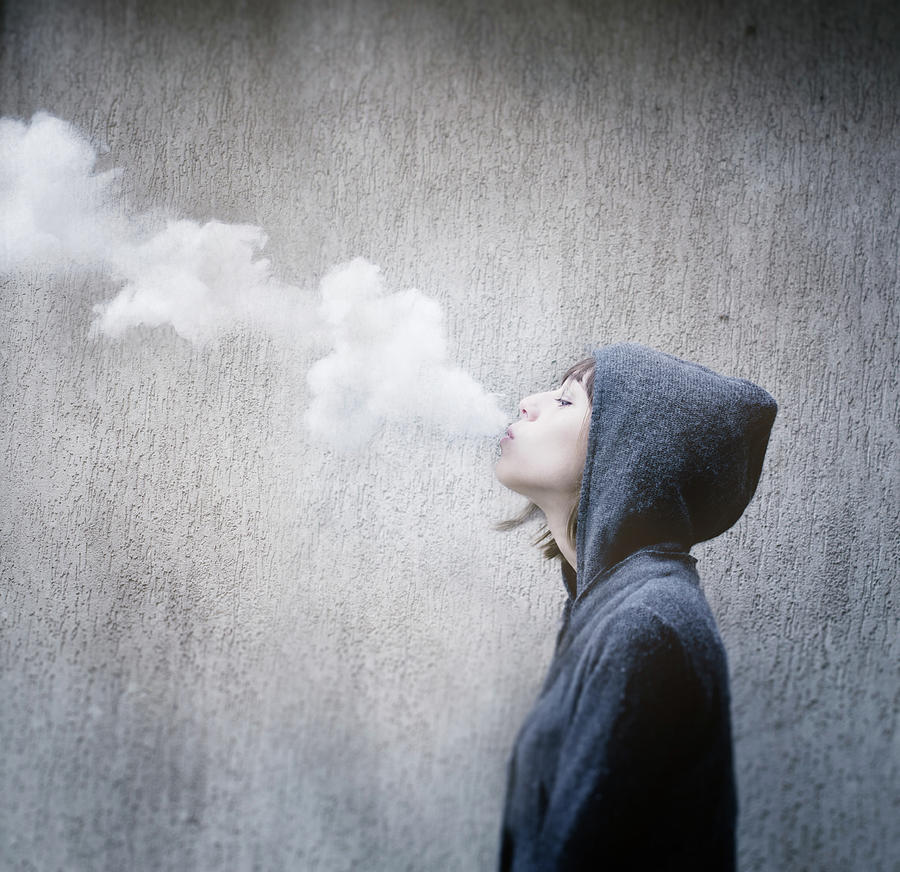Health Effects of Blowing Smoke

Blowing smoke, either actively or passively, has detrimental effects on human health. The smoke released contains harmful chemicals that can cause various respiratory and cardiovascular complications.
As the smoke billows and curls, it whispers a tale of luck and fortune. Like the lyrics in Good Luck Charlie , it carries wishes for a brighter tomorrow. The smoke dances and swirls, carrying our hopes and dreams with it, promising a future filled with blessings and prosperity.
Respiratory Effects
- Lung irritation: The smoke particles irritate the delicate lining of the lungs, leading to coughing, wheezing, and shortness of breath.
- Chronic obstructive pulmonary disease (COPD): Long-term exposure to smoke can damage the airways and alveoli, causing emphysema and chronic bronchitis, which are components of COPD.
- Lung cancer: Smoke contains carcinogens that can damage the DNA of lung cells, increasing the risk of developing lung cancer.
Cardiovascular Effects, Blowing smoke
- Increased heart rate and blood pressure: Smoke contains nicotine, which stimulates the nervous system, causing an increase in heart rate and blood pressure.
- Atherosclerosis: The chemicals in smoke can damage the inner lining of blood vessels, leading to the formation of plaques and narrowing of the arteries.
- Heart attack and stroke: Plaque buildup in the arteries can restrict blood flow to the heart or brain, increasing the risk of a heart attack or stroke.
Long-Term Consequences of Secondhand Smoke Exposure
Even individuals who do not smoke themselves can be adversely affected by secondhand smoke. Exposure to secondhand smoke has been linked to:
- Increased risk of respiratory infections, such as pneumonia and bronchitis
- Asthma development and exacerbation
- Heart disease and stroke
- Lung cancer
Cultural and Social Implications of Blowing Smoke

The act of blowing smoke holds cultural and social significance in various societies around the world. In some cultures, smoking is seen as a symbol of status, wealth, and masculinity, while in others, it is associated with rebellion, non-conformity, and social marginalization.
Social Etiquette and Norms
The social etiquette and norms surrounding smoking vary greatly depending on the cultural context. In some societies, smoking is widely accepted and practiced in public spaces, while in others, it is restricted to designated areas or private settings. Similarly, the exposure to secondhand smoke can be perceived differently, with some individuals being more sensitive or intolerant to its effects than others.
Stigma and Discrimination
Smokers and those affected by secondhand smoke may face stigma and discrimination in certain social contexts. This can manifest in the form of negative attitudes, prejudices, and even social exclusion. The stigma associated with smoking can lead to discrimination in employment, housing, and other areas of life, while the effects of secondhand smoke can have significant health implications for non-smokers.
Strategies for Reducing Blowing Smoke

The health risks associated with secondhand smoke necessitate immediate action to reduce its exposure in public spaces. A comprehensive plan must be implemented, encompassing measures to improve ventilation, eliminate secondhand smoke, and raise awareness about its dangers.
Ventilation Methods for Indoor Areas
Ensuring adequate ventilation is crucial for reducing smoke exposure indoors. The following methods are recommended:
- Natural Ventilation: Opening windows and doors promotes air circulation and reduces smoke concentration.
- Mechanical Ventilation: Installing exhaust fans or air purifiers with HEPA filters removes smoke particles from the air.
- Air Conditioning: Centralized air conditioning systems can effectively filter and circulate air, reducing smoke levels.
Eliminating Secondhand Smoke
To eliminate secondhand smoke, the following measures are essential:
- Smoke-Free Zones: Designating smoke-free zones in public spaces, such as parks, playgrounds, and outdoor dining areas, ensures a smoke-free environment for all.
- Enforcement of Smoke-Free Laws: Enforcing existing smoke-free laws in public places, workplaces, and transportation helps reduce smoke exposure.
- Smoking Cessation Programs: Supporting smoking cessation programs encourages individuals to quit smoking, reducing the source of secondhand smoke.
Educational Materials for Awareness
Raising awareness about the dangers of blowing smoke is crucial for promoting smoke-free environments. Educational materials should include:
- Public Service Announcements: Broadcast messages through various media channels to inform the public about the health risks of secondhand smoke.
- School Programs: Integrate smoke-free education into school curricula to educate children about the dangers of smoking and secondhand smoke.
- Community Outreach: Organize community events, workshops, and campaigns to raise awareness and promote smoke-free initiatives.
Blowing smoke, a wisp of longing curling through the air, a poignant reminder of unspoken words. Seek solace in the blowing smoke lyrics gracie , where melodies intertwine with the unspoken, etching tales of love and loss into the smoky canvas of the soul.
Blowing smoke, a symbol of dreams both fragile and resilient, dancing in the ethereal realm between hope and despair.
Like a gentle breeze, blowing smoke carries wishes and prayers. In the realm of television, “good luck charlie” (link) brings joy and laughter, reminding us that even in the midst of life’s challenges, there is always a reason to smile.
And so, as the smoke dissipates, we continue to breathe, to hope, and to find solace in the simple pleasures of life.
Blowing smoke is a common sight in many cultures, from the fragrant incense of ancient temples to the pungent tobacco of modern cigarettes. Blowing smoke can be a ritual, a social activity, or simply a way to relax. It can also be a source of pollution, and can have negative effects on health.
However, blowing smoke can also be a beautiful and evocative sight, and can be used to create art and atmosphere.
The smoke danced gracefully in the air, carrying with it the weight of my hopes and dreams. I closed my eyes and let the smoke guide me, whispering good luck charlie lyrics in my ear. It was a song of hope, a promise of a brighter future.
The smoke dissipated into the sky, leaving behind a trail of optimism and the unwavering belief that all my dreams would come true.